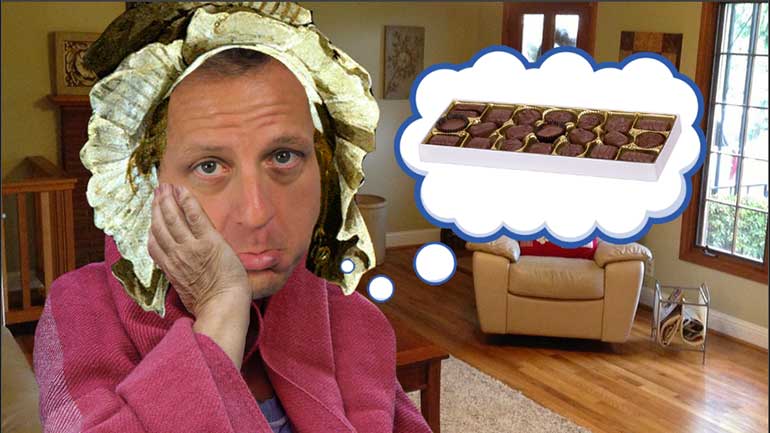ShmoopTube
Where Monty Python meets your 10th grade teacher.
Search Thousands of Shmoop Videos
Modern World History 3.6 Exploitation Station 23 Views
Share It!
Description:
Death by fire. Death by machinery. Death by collapsed coal mine. The workers of the Industrial Revolution couldn't catch a break.
Transcript
- 00:04
Inventors produced all kinds of marvelous
- 00:07
machines during the Industrial Revolution.
- 00:09
But these machines didn't come into existence through magic.
- 00:12
Every phonograph and camera and steamship had to be put together piece by piece,
- 00:17
by people.
Full Transcript
- 00:18
And the faster and more efficiently
- 00:19
those people worked, the better.
- 00:21
Enter the assembly line. The bosses of the Industrial Revolution
- 00:25
would put a bunch of workers in a row, and these workers
- 00:28
would perform a single task, over and over and over, and over, again.
- 00:33
So kind of like a bunch of real life Sisyphuses.
- 00:36
Was this horrifically boring for your average factory worker? Sure.
- 00:41
However, with every worker in the assembly line focused on doing his or her specific task,
- 00:45
products could be built much, much faster, which ultimately meant much, much more money for manufacturers.
- 00:51
Of course, it didn't take long for companies to start to view their assembly-line workers as easily replaceable parts rather than people.
- 00:58
The specialized nature of factory work, where
- 01:00
one person was assigned to one repetitive task,
- 01:03
meant a worker could get the boot without the boss-man having to worry much about finding
- 01:07
someone else to learn the gig and take over the job.
- 01:10
The same reasoning applied when a worker got hurt on the factory floor. And hoo boy, did people get hurt often.
- 01:16
A laborer could lose a finger, a hand, or an entire limb to a machine.
- 01:19
Because workers stood on their feet for hours without a break,
- 01:23
foot, ankle, and knee injuries were really common.
- 01:26
People also got sick from breathing in pollution and dust on the factory floor.
- 01:30
And then there were the industrial accidents.
- 01:32
New York City's worst was the Triangle Shirtwaist fire of 1911,
- 01:37
when nearly 150 people, many of them teenaged girls,
- 01:40
got caught on the upper floors of the Asch Building.
- 01:43
Those who didn't die jumping from the windows to the street below, died of smoke inhalation or burned to death.
- 01:50
Factories weren't the only bane of working-class existence.
- 01:53
The Industrial Revolution ran on coal,
- 01:55
which could only be pulled out of mines by—you guessed it—lots of poor people.
- 01:59
Many of the mines were unstable and full of lung-clogging coal dust.
- 02:04
There were also a bunch of weird singing dwarves who liked to whistle while they worked. All in all, lots of dangers.
- 02:11
At least factory workers had the option of ditching their jobs for, well, something other than getting shredded by a machine.
- 02:17
Slaves weren't so fortunate, and as we discussed in an earlier lesson,
- 02:21
the invention of the cotton gin actually
- 02:22
reinforced slavery in the American South.
- 02:25
However, on the tea-drinking, scone-eating side of the Atlantic, change was afoot.
- 02:30
The British decided that slavery was totally uncool and
- 02:33
inefficient, and they got rid of the institution in 1833.
- 02:37
The laborers used by the British were all free men and women.
- 02:40
However, they were so dependent on their wages to survive that many critics believed the
- 02:44
Industrial Revolution in England had banished
- 02:47
one kind of slavery simply to replace it with another.
- 02:50
Death by machinery. Death by fire. Death by collapsed coal mine. Death by irritating, whistling dwarves.
- 02:57
The workers of the Industrial Revolution just couldn't catch a break.
Up Next
GED Social Studies 1.1 Civics and Government
Related Videos
When you're about to marry the love of your life, not many things could stop you. However, finding out that your future hubby is keeping his crazy...
Here at Shmoop, we work for kids, not just the bottom line. Founded by David Siminoff and his wife Ellen Siminoff, Shmoop was originally conceived...
ACT Math: Elementary Algebra Drill 4, Problem 5. What is the solution to the problem shown?




